Updated 23 October 2025
On November 9, Madrid diocese’s patron saint, the Virgin of Almudena, salies forth from her cathedral in a procession that travels through town to the Plaza Mayor and back again. In the days running up to this grand appearance, children offer flowers and food that will be donated later to the needy, while bakeries across the city display Corona de la Almudena cakes—brioche-like cakes filled with cream and topped with chopped almonds and candied fruit, created specifically to honour the Virgin (yum!). Of course, a special mass is held in the Cathedral of the Almudena and better yet, you get the day off – even if the festival falls on a weekend, you get the following Monday off!

On the face of it, this is a deeply Catholic tradition. But there’s something curious about this beloved patron: her name, Almudena, comes from the Arabic word Almudayna, meaning citadel—a linguistic reminder of Madrid’s Islamic past.
An Arabic Name
Though it was the Muslims who put Madrid on the map in 860 by building a fortress to protect the kingdom of Al-Andalus from Christian raiders, save for a tiny section of the citadel wall, there is little physical trace of their presence in the city today. However, that isn’t to say they haven’t left their mark; along with around 8% of Spanish vocabulary, the name for Madrid itself partly derives from Arabic (Mayrit, which means ‘place of many springs’). So too does the name of the archdiocese’s patron, the Virgin of Almudena, which comes from Almudayna, the Arabic term for citadel.
The Legend of the Hidden Virgin
The story goes that when the Muslim troops arrived, Madrid was a Visigoth settlement. Afraid the invaders would desecrate their religious artefacts, the citizens of this settlement hid a treasured wooden figurine of the Virgin Mary within the city walls. When Alfonso VI conquered the citadel on his way to Toledo around 1083, the Virgin was recovered. Through the power of prayer, the wall crumbled, revealing the Virgin holed up with candles still burning beside her. Much jubilation ensued, and from thereon the Virgin of Almudena was revered as the city’s spiritual saviour. Unfortunately, these days, the experts agree that there is no evidence for this narrative and that Madrid’s origins are most likely Muslim.
A Capital Without a Cathedral
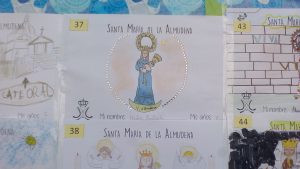
Madrid’s Almudena Cathedral, which stands opposite the Royal Palace, where the fortress once stood, has a short but tortuous history. The first designs for a church were drawn up in 1879 by Francisco de Cubas, but when Pope Leo XIII granted a bull in 1885 for the creation of the Madrid-Alcalá bishopric, essentially giving Madrid its own diocese apart from Toledo, the blueprints were changed. After centuries of lobbying, Madrid would finally get a cathedral!
Cubas began a new, more ambitious project inspired by 18th-century French Gothic architecture. This project would include a large Romanesque crypt, which served as the basis for the final construction. Unfortunately, funds were insufficient and there were many delays. In 1899, Cubas died, and a new team of architects were put in charge.
The crypt was finally opened in 1911, but work was stalled during the Civil War. After this, aesthetic criteria changed, and a Gothic cathedral was no longer considered suitable because of the contrast with its surroundings. Instead, the building was designed to blend with the palace next door, with much less exterior decoration—perhaps a cost-cutting measure. In 1950, work restarted, but the cathedral wasn’t officially completed until 1993, when, on June 15, it was consecrated by the pope.
Much Beloathed Almudena Cathedral
If you ask a Madrileño what they think of the Cathedral of the Almudena, they’ll tell you it’s an eyesore. I honestly have never met a single local who loves it, though personally, I don’t find it irredeemably hideous. While there is some truly horrible 21st-century religious artwork inside, the ceilings and stained glass windows are actually pretty groovy. But all this is window dressing for the highlight of any visit: the statue of the Virgin herself. Carved somewhere between the 15th and 16th centuries, the late Gothic wooden figure is pretty old, but nowhere near old enough to be the original Virgin—a fact that did not seem to bother the line of devotees waiting patiently to pay their respects.
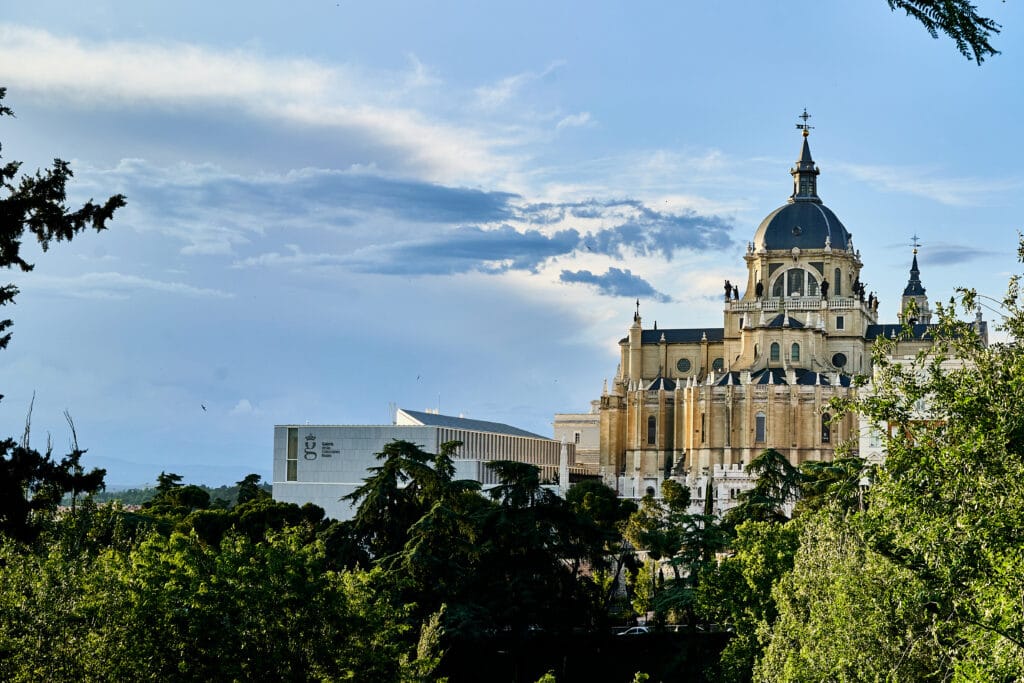
The Arc of San Isidro
It’s also well worth popping into the cathedral to see the Arc of San Isidro. Our knowledge of San Isidro’s life comes from the vanished Codex of San Isidro and this beautiful 13th-century arc has been on display here since the 400th anniversary of his canonisation. The mudéjar artwork on the sides illustrates the miracles he performed, showing exactly why he’s a character you’d want to align yourself with in a fix—it’s a stunning object and an unexpected treasure within the cathedral.
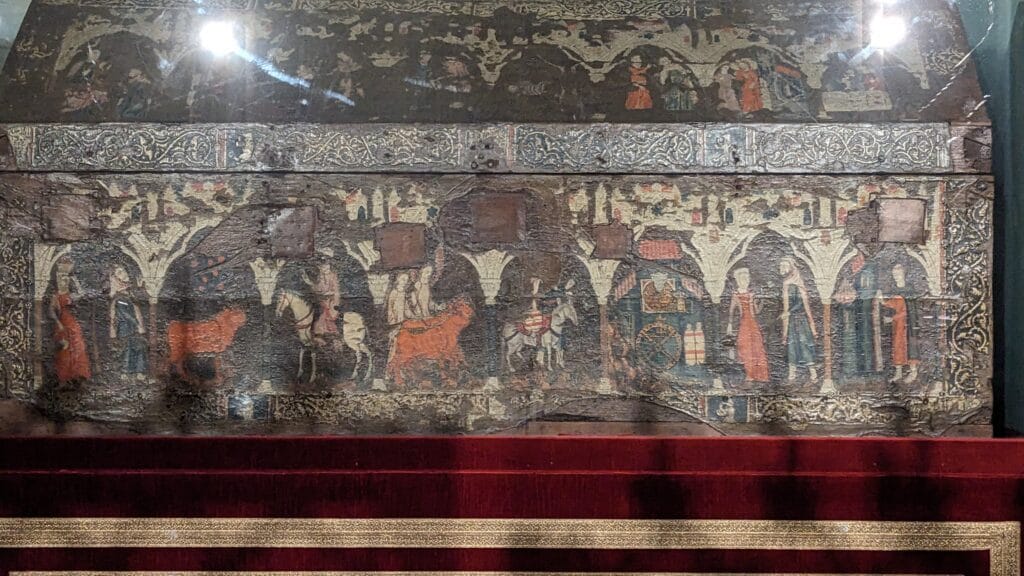
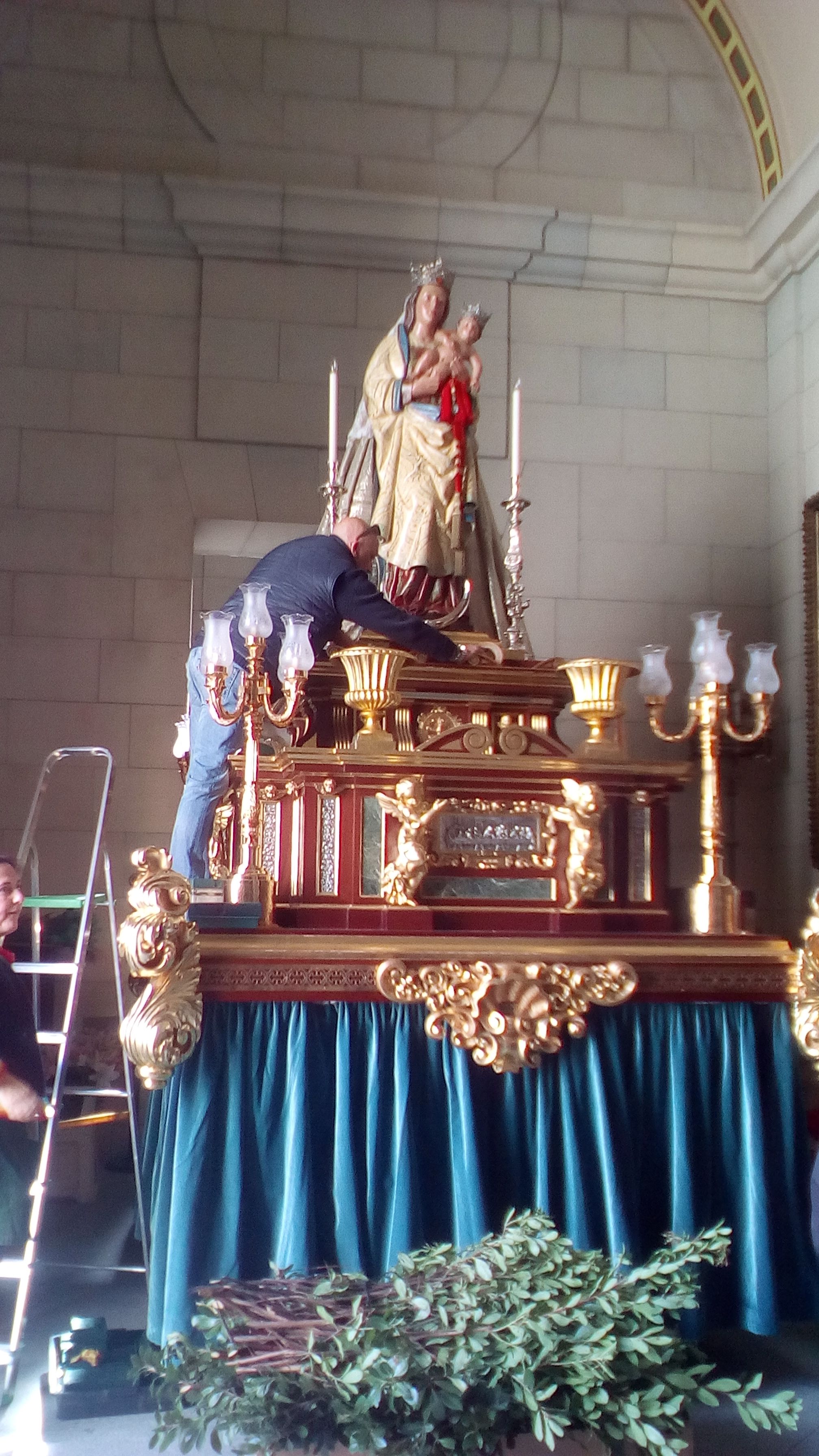
The Archaeological Evidence
Away from the cathedral’s frenetic activity, just down the hill, are the city’s original Arabic walls, which supposedly crumbled back in the 11th century, revealing the virgin hidden inside.
Leaving aside this miraculous revelation, there’s so much about the legend of Almudena that doesn’t add up. Take, for instance, the fact that there is no archaeological evidence to suggest that Madrid was ever a Visigoth settlement. Furthermore, the idea that this purported village’s Christian populace was afraid that their Virgin would be desecrated is rather ludicrous. Even if they’d been ignorant of the conquering army’s policy of religious tolerance, you’d think they might have found this out during centuries of living under Muslim rule and taken the opportunity to disinter their precious idol.
Interested in finding out more about the history of Madrid away from the crowds? Why not buy a copy of my book Quiet Madrid. It’s filled with quiet corners where you can escape the crowds and experience a more authentic Madrid. And if you want to know more about Madrid’s medieval history, check out my VoiceMap audio tour.

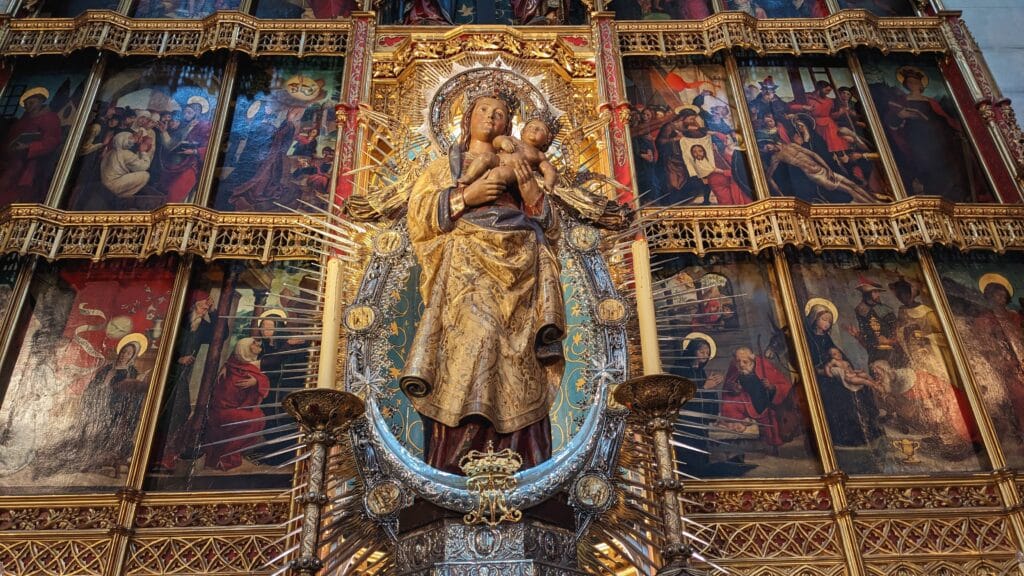
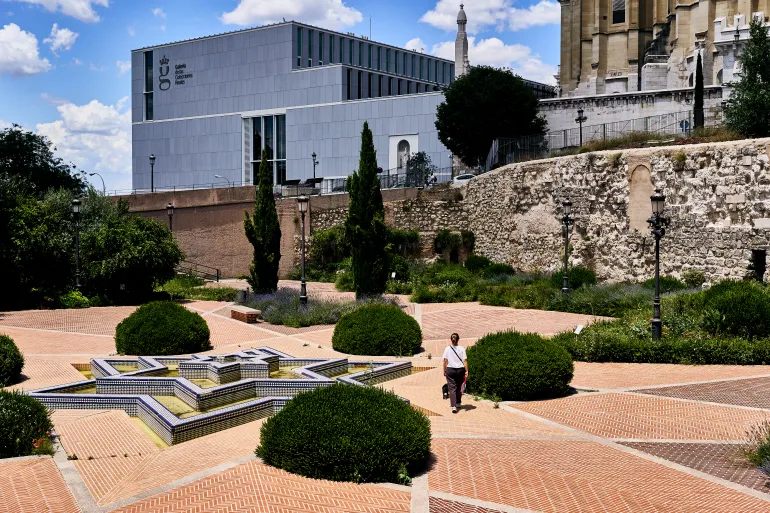
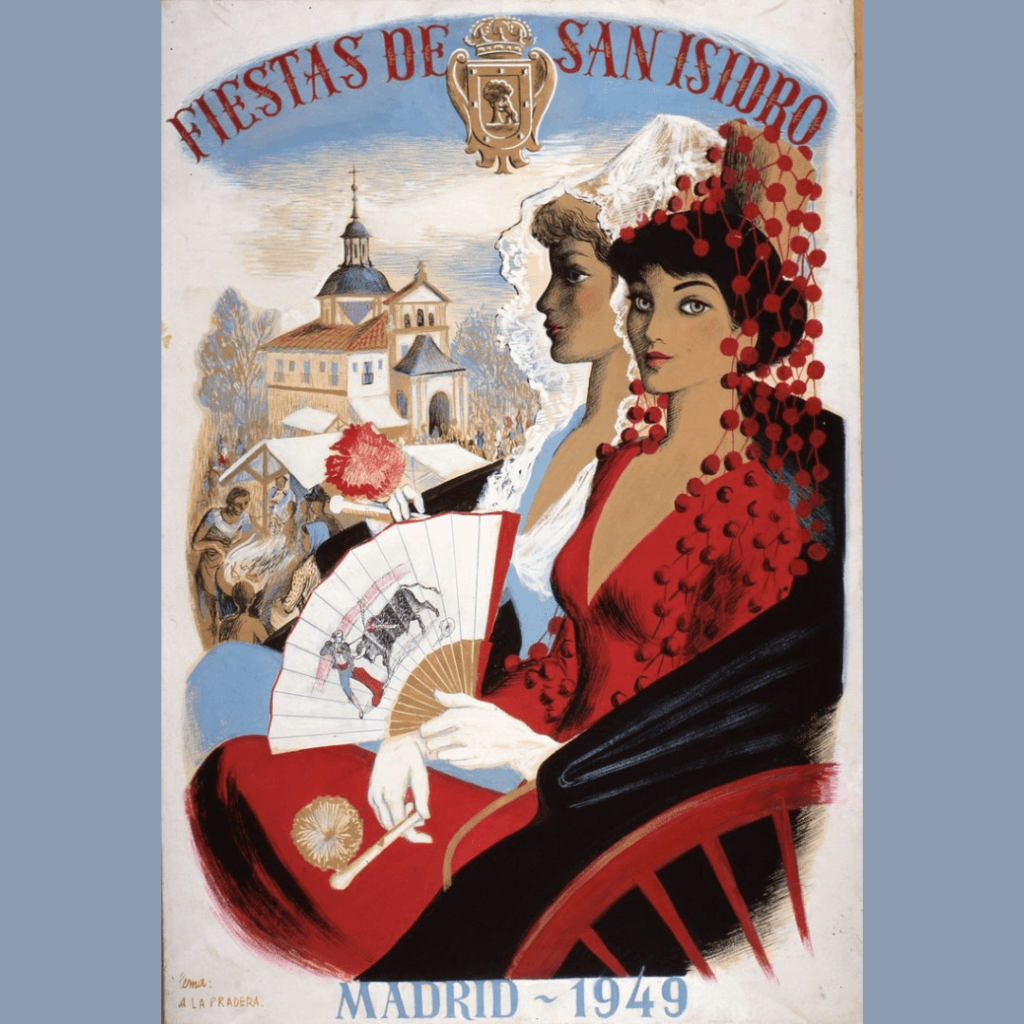
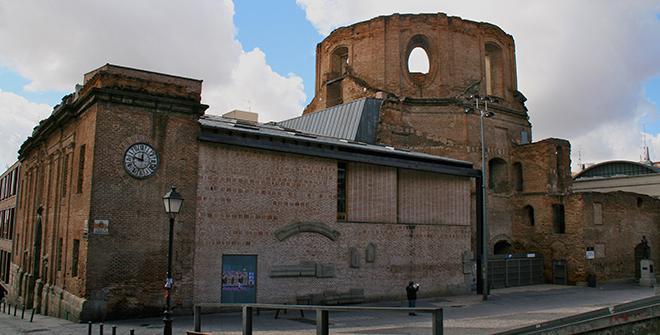
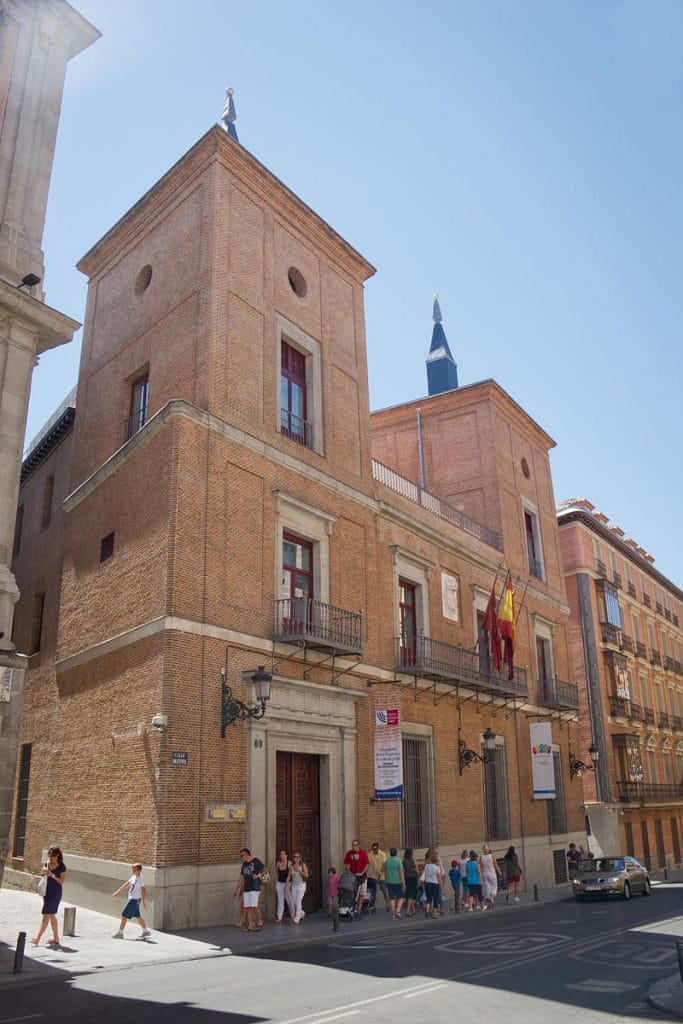
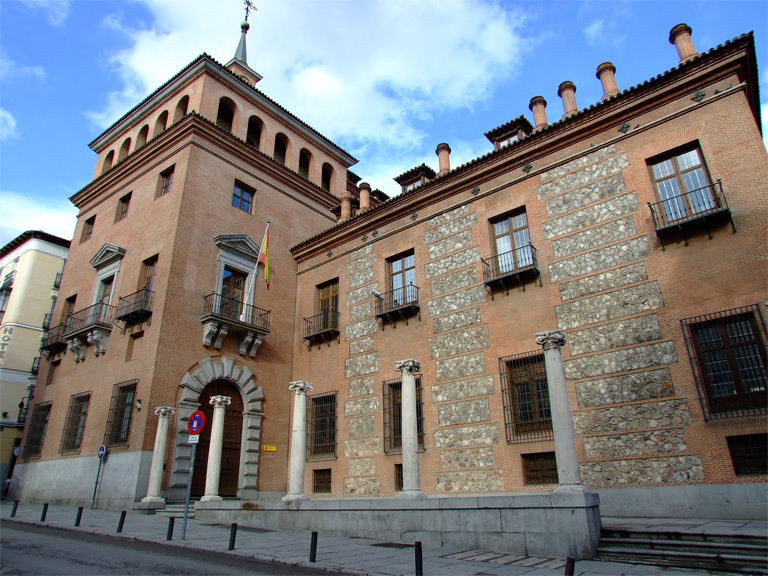
I too have been trying to figure out what happened to the original statue, assuming it even existed. Obviously the existing statue was created much later. What’s curious is that the painting of the Virgin of the Flor de Lys, which was supposedly painted in 1085 when Alfonso VI recaptured the city but before the wooden statue was rediscovered in 1087. If they didn’t find the statue, why would they have covered up the painting for over 500 years? And if they did find the statue, where is it now?
Hi Larry. I hadn’t heard of the Virgin of Flor de Lis, but now you’ve brought my attention to it I absolutely HAVE to go see it (love the crypt in any case). You mention it was covered up, so does that mean it was recently rediscovered? Thanks for commenting.
I saw the Virgen de la Flor de Lis (or Virgin of the Fleur de Lys or Virgin of the Lily) painting in 1971 in the Crypt of the Cathedral and copied down the plaque next to it. I also found a couple of websites about it, including: https://www.elpandelospobres.com/noticias/flor-de-lis-la-imagen-mas-antigua-de-la-virgen-conservada-en-madrid . Alfonso VI had it painted on a wall in the original Iglesia de Santa Maria de la Almudena in 1085 or thereabouts when they couldn’t find the Virgen of the Almudena statue, so the painting is Romanesque and actually portrays his wife, the queen, as the virgin. I found another website that asserts that the original wooden statue was lost in a fire at the old church of Santa Maria de la Almudena during the reign of Felipe II, so that presumably accounts for the late-medieval statue now in the cathedral created to replace it.
Pingback: The "reconquest" of Madrid - The Making of Madrid
Pingback: The Reconquest That Never Was - The Making of Madrid